Spooky stories have been passed down in the Ozarks for generations. Here are just a few haunted places and pieces of history that fill local hills and hollers.
It’s totally true to say that folk tales and their cousin, urban legends, have been part of the Ozarks longer than anyone today has been alive. These stories — as told by “they say” lore — have long helped explain and entertain Ozarkers in a much different world, one with fewer distractions and channels of information.
While some stories have transformed with time, many have been handed down or, in today’s world, shared via social media.
“We had a lot less entertainment before radio, TV, internet; even books were less common and more expensive,” writes Dr. Adam Davis, a professor of English and Linguistics at Truman State University, and a leader with the Missouri Folklore Society.
“Much more importantly, everything happened face to face, and storytelling, like music, wasn't just something that was consumed, but a relationship, with real people, in real time,” Davis writes. “You had to pay attention, you can't let a human being just run in the background.”
Here are six legends long told in Springfield and the greater Ozarks, just in time for Halloween:
The ghost of Clara Thompson Hall

One of the oldest buildings on Drury University’s campus also holds one of its longest-running legends: The ghost of Clara Thompson Hall. A spirit has been said to be behind the quiet sounds of a piano playing in the hall, or perhaps to be listening when someone else is practicing — and then heard suddenly getting up out of a chair when the song is done, even though no one is visible.
While news articles give a couple of theories for who could be behind the ghostly presence, the collective culture tends to point to Clara Thompson herself.
Thompson, previously Clara Wallace, came to Drury to study music in the 1880s. Her father, Washington Irving Wallace, was a lawyer and judge in Lebanon, Missouri, and one of Drury’s first trustees.
Clara Wallace likely met her future husband, Edgar Thompson, at the school. The couple married in 1894, but tragedy quickly befell the family: The next year, the young bride was stricken with what newspaper accounts described as consumption. Today, it’s known as tuberculosis.
In September 1895, just a few months after she became ill, she died at age 21. Her baby, Freda, died the month before.
Nearly 30 years later, Thompson’s mother made a large gift to Drury to help construct Clara Thompson Hall. It was — and still is — the home of music on Drury’s campus.
The stately brick building opened in 1926, the same year that work was completed on Wallace Hall. A dormitory that was also funded with a significant contribution from the Wallace family, it is also still used for its original purpose today.

But what about the ghost?
It’s unclear of the exact year stories began circulating about the ghost in the music hall. Drury Archivist Bill Garvin says the stories go back to at least the 1970s. However, regardless of the year, they began many years after Thompson’s early and tragic demise, as the building wasn’t even built until more than 30 years after her death.
Lori Hutton, who was a music student at Drury in the ‘80s and today serves as an instructor and director of jazz studies at the university, says she believes the ghost is real.
“When I was a student, yes, I knew of the stories,” she writes. “And yes, I heard some noises, felt some strange things. The students still talk about the legend, and most think she is a real ghost.”
Similar sentiments are shared by Dr. Allin Sorenson, dean of the School of Communication & Fine and Performing Arts, who has worked at Drury since 1988.
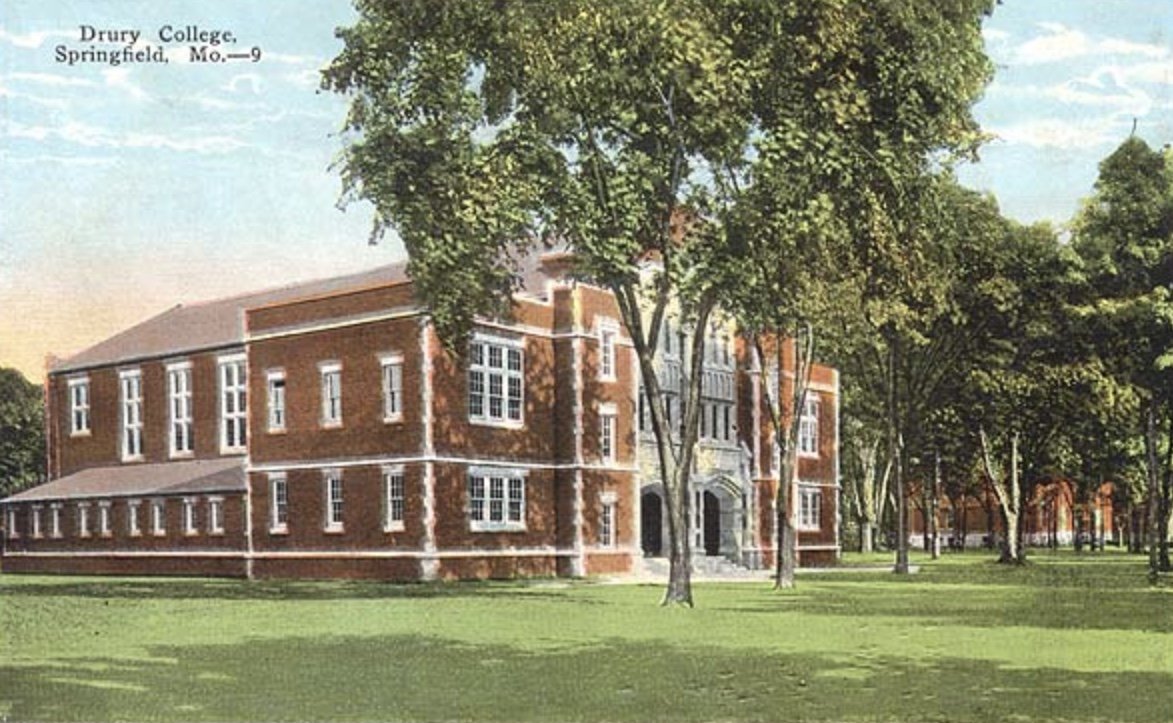
“At this time each year, when students are returning to classes, the story of the Clara Thompson ghost rematerializes,” Sorenson writes in an email. “It seems every encounter with the ghost is slightly different, but the one common theme is that it is a benevolent ghost, more interested in playing and enjoying music than instilling fear.
“I’ve been at Drury for over three decades and have heard many strange and unexplained noises, but never directly encountered what is affectionately called Clara. The one story that I did hear firsthand many years ago was from a student who was practicing piano on the stage in the hall late one evening. This student said that a seat in the front row mysteriously lowered as if someone was sitting there listening, but it was empty. The student kept playing, finished the piece, and the seat slowly closed.
“I like the sentiment of former music department chair, Sidney Vise, when he characterized the ghost as gentle and watching over us. Quoted in the student newspaper, the Drury Mirror, from 1987, he said: ‘I believe activity, especially with music, makes it happy.’ I think he captures Clara’s ghost perfectly.”
The Albino Farm and Hatchet Man’s Bridge
For students of a certain age, collective lore says traveling north from Springfield on National Avenue was said to bring a brush with death — or at least a good scare.
Stories vary about the place known as the Albino Farm, located near Greenlawn Cemetery north of town. At their core, they generally involve someone affected with albinism, a condition which often results in “white hair and very light-colored skin,” according to information from the Mayo Clinic.
Some said the place was inhabited by a colony of people with albinism. Other more horrific versions of the story suggest that individuals with albinism were chained in a dungeon and subjected to science experiments, or that there was an albino farmhand — who might carry a hatchet.
The stories were accentuated by an eerie old metal bridge, which was known as Hatchet Man’s Bridge, or Haunted Bridge.
One version of the tale focuses on a young couple who stopped their car on the bridge many years ago — and then it wouldn’t start again.
As the story goes, the young man got out of the car and told his date to not open the door under any circumstances. She soon heard thumping on the roof of the car, but heeded his warning, and did not look outside. The next morning, she was awakened by police, who escorted her from the car and also told her not to look behind her. She looked anyway, and saw her boyfriend dead, hanging from a tree limb above the car.
Another version of the story involves a man with a hook for an arm.
Despite the varying details, those stories and more were tied to the farm, which was formally known as Springlawn Farm.
The estate was initially founded in the late 1800s by the Headley family, who developed it as a place of recreation, complete with a racetrack. After the turn of the 20th century, it was purchased by Mike Sheedy, an Irish immigrant with quite a few kids and even greater acreage. But by the mid-1960s, just three of his single daughters remained living on the property.
It seems it was around this era when the legends really began to take off.
One person who remembers these stories firsthand is Steven Spencer, a photographer who grew up in Springfield and graduated from Hillcrest High School in 1973.
“I used the Albino Farm as an excuse for being late for school a lot,” he recalls. “I would tell the teacher, Daisy Jenkins, that I had missed the bus and the only shortcut was to go through the Albino Farm. I would tell her, and the students, that while cutting through the property, they (albinos) would see me and start chasing me with axes and pitchforks until I hit the other side of the property to make my escape.
“The class was always more interested in what happened than her, and she would always give me that look before telling me to take my seat.”
While scary, the stories did not keep youngsters away from the property.
“Farm Road 165 was the best place to take your date to scare her, which backfired on many guys that wanted to high-tail it out of there first — but we figured it would be cheaper and quicker to get the girls in our arms there than the drive-in movies,” Spencer writes, also sharing another version of the bridge story.
As he tells it, an escapee from the Medical Center for Federal Prisoners murdered a couple, and put their heads on either side of the bridge’s railings.
“So you had at least three chances within a quarter of a mile to scare, be scared and impress or deflate your date with your bravery,” Spencer said.
The Spook Light
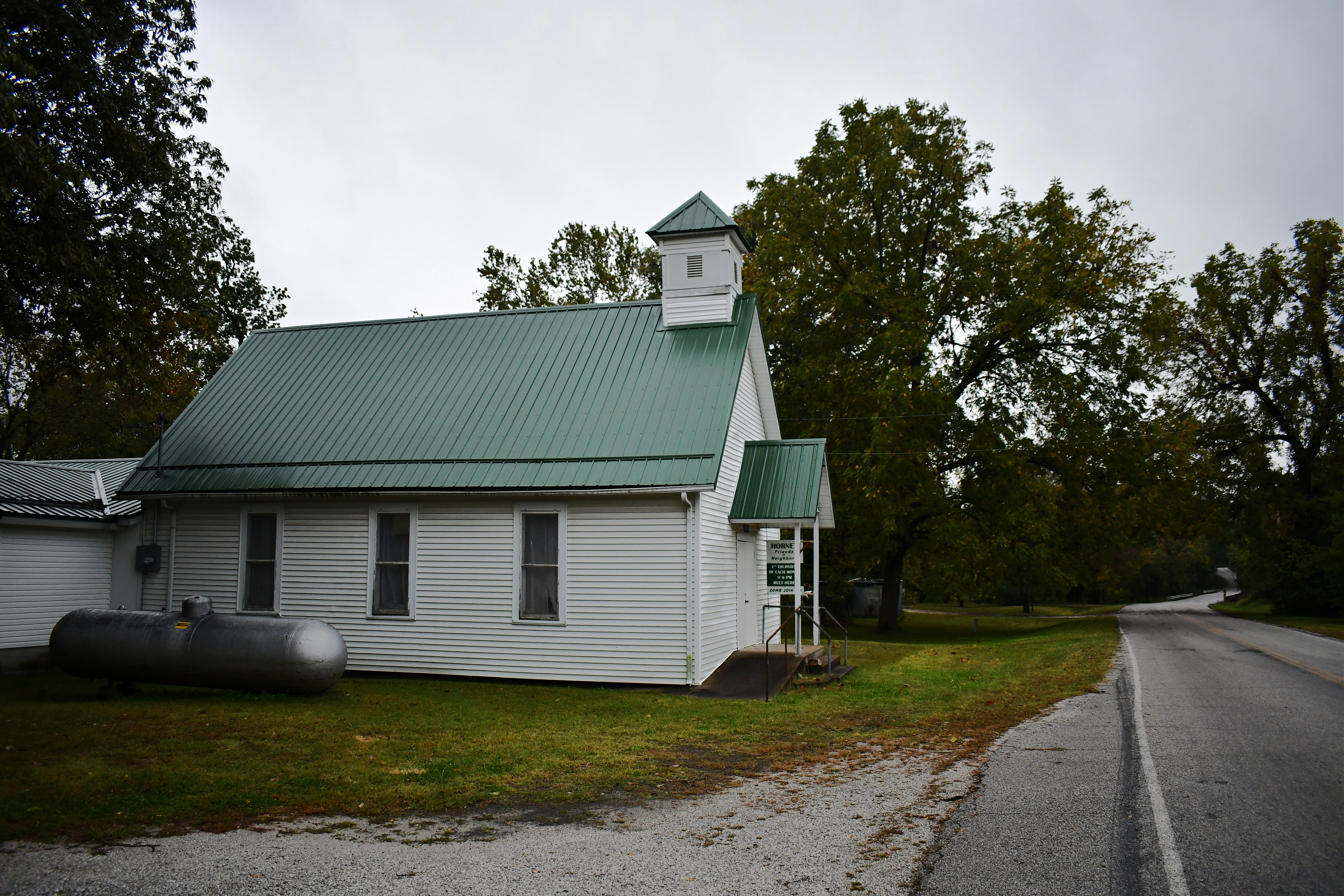
A flashing and flying orb of light on the Oklahoma-Missouri state line has puzzled visitors and locals alike for more than a century. Some know it as the Joplin Spook Light, while other names include Tri-State, Ozarks, Seneca or Hornet, a place that today simply consists of a church, cemetery and a community center.
“It depends on where you're from, or what town you want to promote, I guess,” says Larry Wood, a historian who has written numerous articles on the phenomenon and “The Ozarks Spook Light: History, Legend, and Speculation,” a book published in early 2023.
“I guess the most descriptive would be maybe Tri-State Spook Light — that's the name often given to it,” he continues. “In my book, I called it the Ozarks Spook Light simply because I wanted to try to appeal to a little broader audience than just immediately around Joplin.”
Wood says he first saw the spook light in 1975, the summer after he became a teacher in Joplin and heard his students talking about the legend.
“I saw it — it was interesting. It was kind of an orange glow; it would get brighter and get dimmer or maybe disappear completely and come back and bob around and appear to get closer to you, then move away from you — that sort of thing,” he says. “It didn’t do any real crazy things like some people report, like landing on the hood of my car or coming inside my car and burning the upholstery. It didn’t do anything like that, but I was fascinated by it.”
While reported experiences vary, the general gist of the legend is that the spook light is a light that has regularly appeared along E-50, a road on the Oklahoma side of the state line, and close to that nearly defunct community called Hornet.
Some stories date the legend to before there were cars in the vicinity, discounting a theory that reflecting headlights are to blame for the odd light. The question became so large that in 1946, officials from Camp Crowder at nearby Neosho and staff of the Kansas City Star newspaper collaborated to study the spook light.
In the end, they believed it was indeed the headlights that triggered the phenomenon.
“The solution of the ‘mystery' light probably will not satisfy some persons who have seen it,” the Star reporter wrote in the article. “We have no desire to insist upon the solution and we certainly don't want to rob anyone of the enjoyment of a good ghost.”
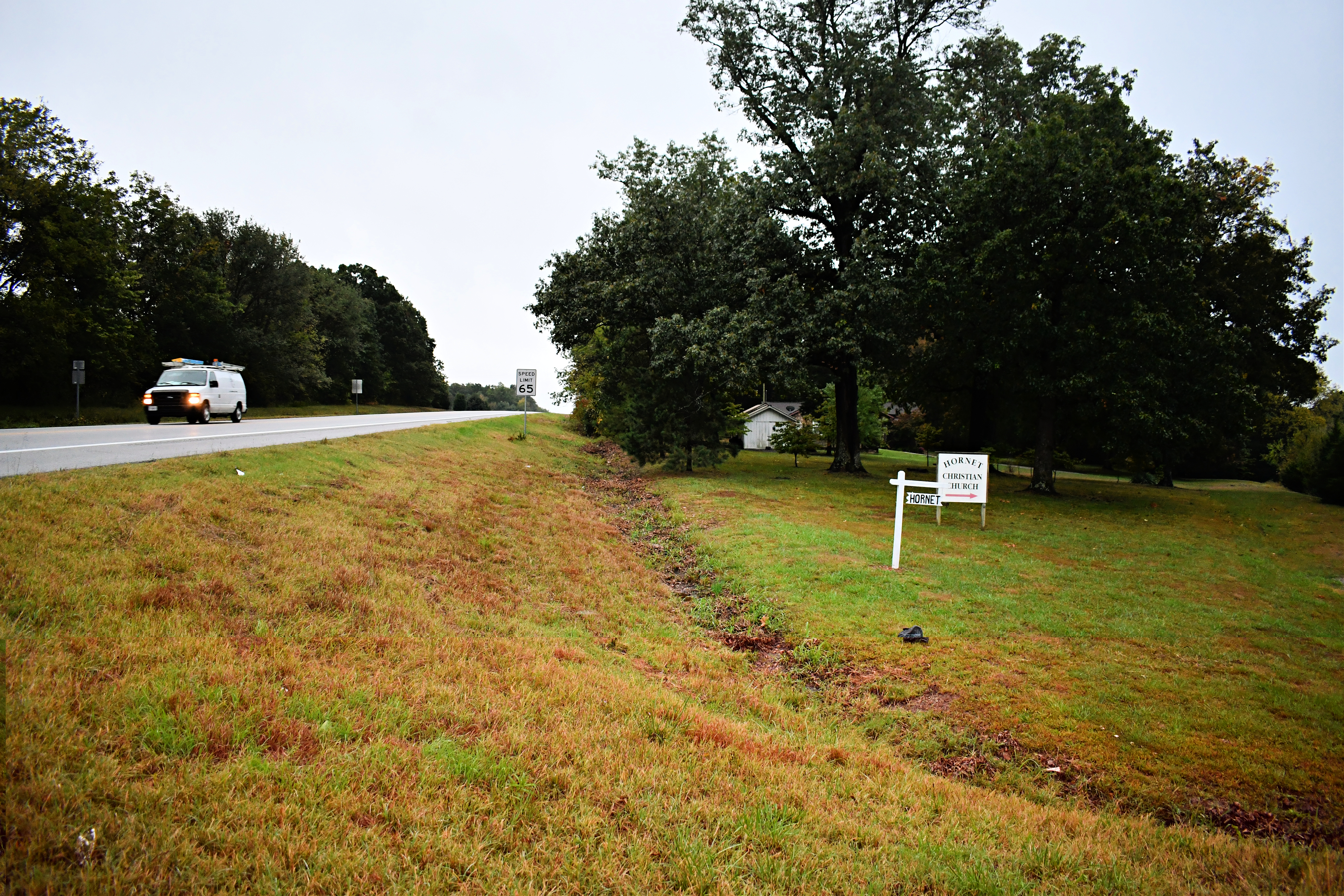
Significant interest in the story ties to Arthur “Spooky” Meadows, who was an active promoter of the legend in the mid-20th century. Meadows even built a museum about the spook light, complete with treats and souvenirs, which was taken over by his son-in-law, Garland “Spooky” Middleton. He also moved the road where the light could best be seen.
“The official name of it now is E-50,” says Wood. “E-40, interesting enough[…] it was the original Spook Light Road. In the late 1930s and throughout most of the 1940s, that’s where people parked to look at it. But it moved down to E-50 when Spooky Meadows built his little cabin down there and started promoting it and set up a telescope.”
Today, some things have changed. The museum is gone and the old lonesome gravel road has been paved. But the legend persists, proven if nothing else by the publication of Wood’s book.
“I think there's still people that believe, that are really true believers. But it’s not nearly as big of a draw as it used to be,” he says.
Wood shares a recent encounter he had in Webb City, a community less than 10 miles from Joplin, when he spoke to a local group about the legend.
“I got an argument from some of the people there at Webb City,” says Wood of when he shared a theory that there may be an explanation for some of the experiences. “That's why I tell them, ‘Well, I don't discount the possibilities that there are other things, too,’ but I still think the majority of the sightings are headlights.”
The Crescent Hotel
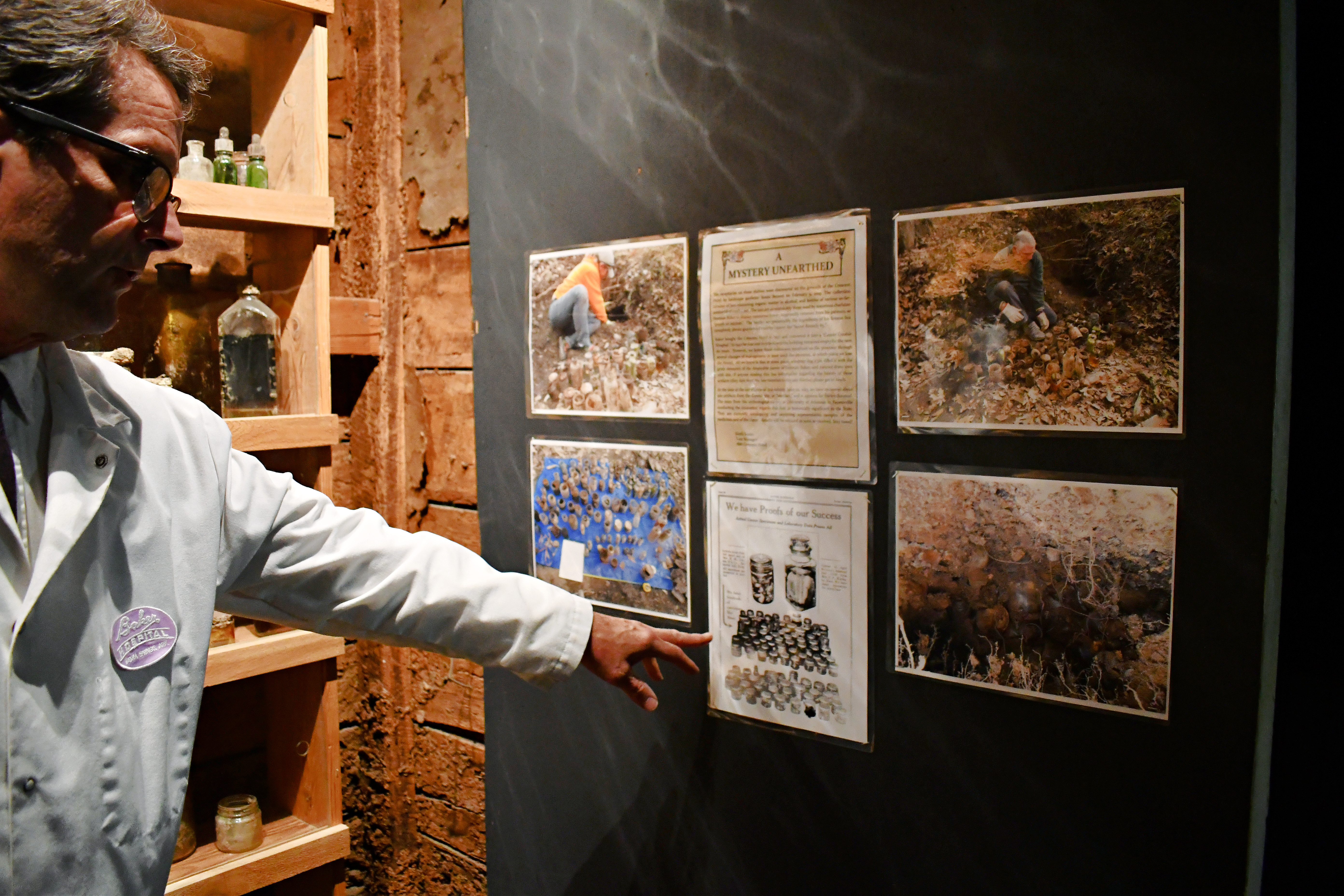
Eureka Springs has been a tourist destination since its start in 1879, when people were pouring into the northwest Arkansas town for the purported health benefits of its spring water.
The Crescent Hotel sprang up as a result. The luxury inn opened in 1886 to host high-class clientele, even attracting a delegation of about 50 people from Springfield to attend its glittering grand opening.
The 140 years since have seen the Crescent evolve from that gala night to a college for women, a charlatan-run cancer hospital and back to its role as a hotel for guests in the Arkansas community.
Along the way, it has picked up a few ghosts — and guests who come to see them.
During certain times of the year, the Crescent offers multiple tours a day for folks to come through and learn about the history of the hotel and its visitors who never leave. Some stops on the tour include the rooms where sightings and experiences have been reported. Another is the morgue where the bodies of deceased patients were stored during the hotel’s days as a proclaimed cancer center.
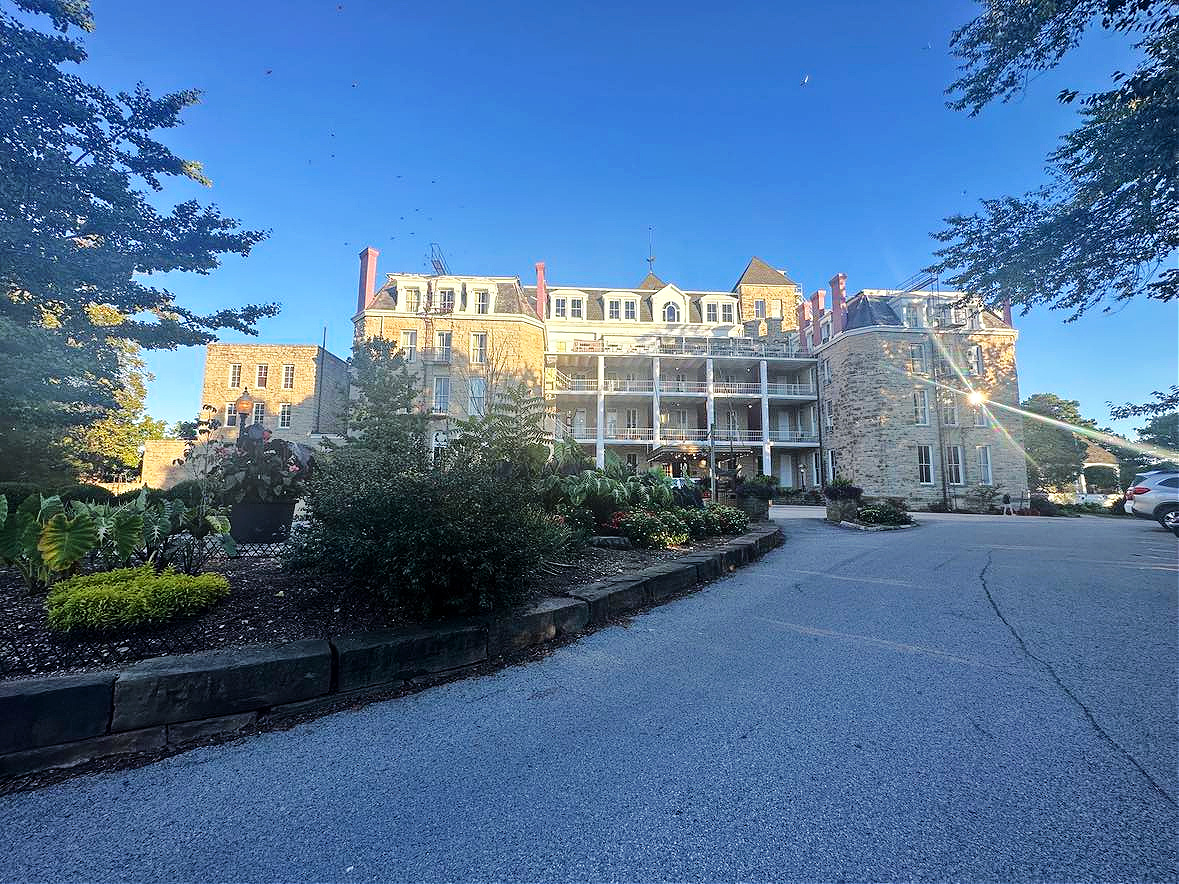
Little factual information exists about the ghostly presences said to regularly be seen at the hotel. But the hotel feels confident enough in some of the repeated reports to have a list of names it shares on its website and through its tour guides.
There’s Theodora, a young woman said to either be a former employee or patient at the cancer clinic; Michael, a worker who died during construction of the hotel; Dr. Ellis, who was a physician at the hotel at the turn of the 20th century; Breckie, a little boy who died of a complication from appendicitis; and the no-named “Girl in the Mist,” who is seen jumping — or being pushed — off a nearby balcony.
Little information is known about the reported ghosts, although Dr. Ellis and Breckie have been confirmed as real people. Another, Morris, is a marmalade tabby cat that was once nicknamed the hotel’s general manager and has been seen walking the halls after his death in the early 1900s. But for most, the stories have been built by bits of anecdotal sightings.
“It’s one of those oral traditions, stories,” says Dan Bennett, one of the guides for ghost tours, of the “Girl in the Mist” story. “But it’s persisted for so long; the story has been told here for a long, long time.”
While the hotel doesn’t keep track of when ghosts are sighted, they receive anecdotal reports from visitors, some of which are found in a black binder on a coffee table in the hotel’s lobby. Others fill a Facebook group entitled The Crescent Hotel Ghost Tours, where photos and commentary write the current chapter.
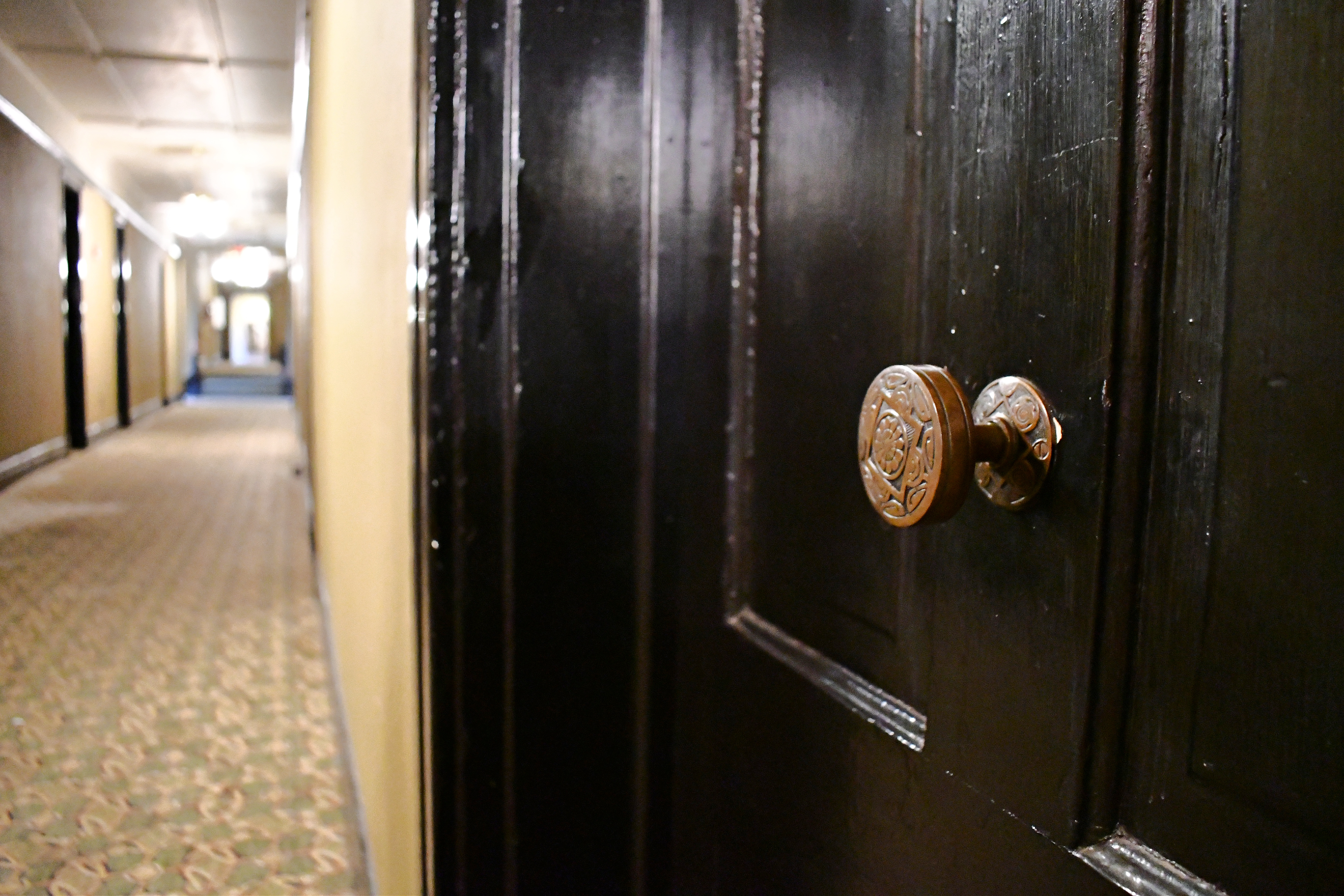
The Headless Cobbler of Smallett Cave
Down lonely gravel roads in rural Douglas County, near a defunct community named Smallett, lives a ghostly story that dates to the late 1800s.
It’s of a headless cobbler who has been seen wandering — despite not having a head — and heard working in a cave, his presence marked by the “tap, tap, tap” of his shoe-making tools. Then there are other odd things, like supposed deaths near the cave, and a red light that couldn’t be explained.
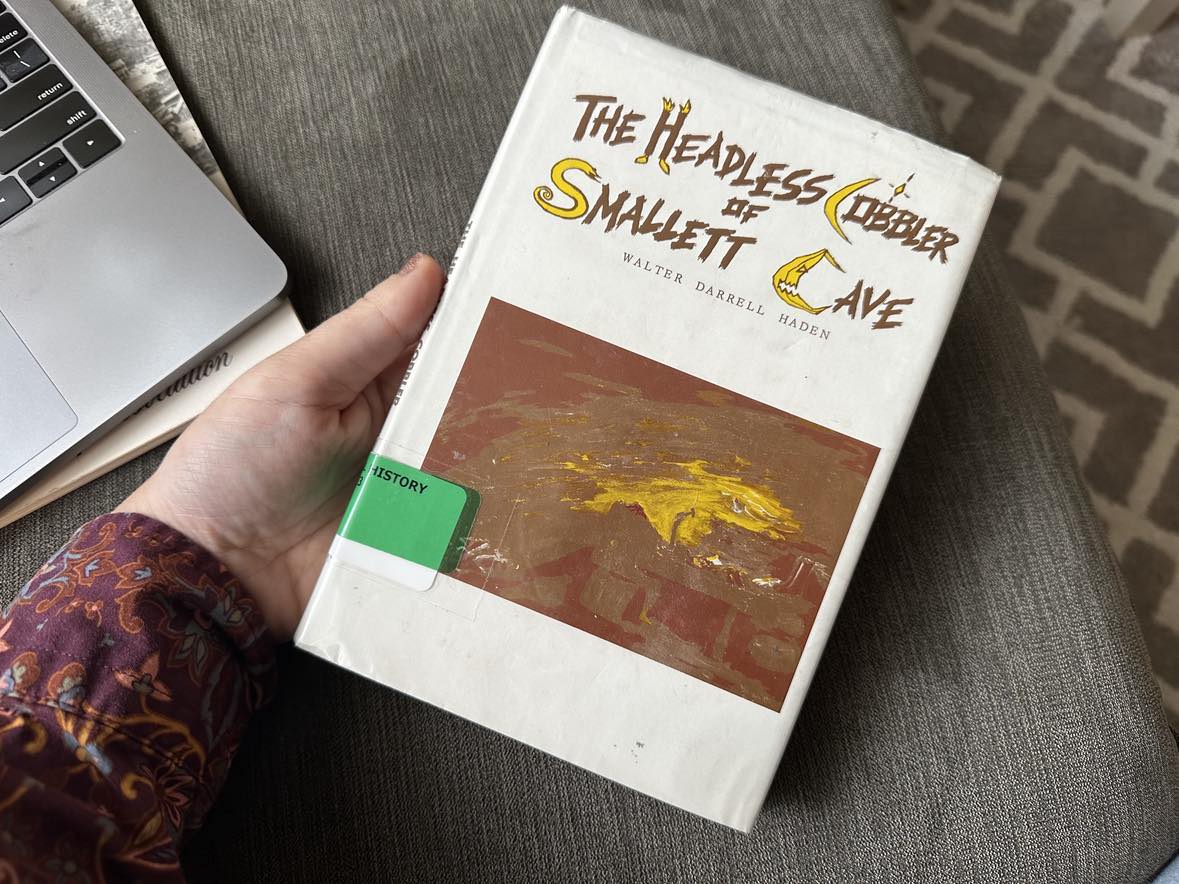
The story began soon after the Civil War. One of the first accounts was reported by Frances Kay Haden Moten, who died in 1932 but shared the story with her son, who recounted it in 1960:
“Ma and a renter's wife — Mrs. Hall, I believe — were on their way to sit up with a woman who was dying with consumption — Mrs. Cloud, I think. The two women were walking up the road alongside Spring Creek and the old cave across from it.
“Ma told us that just about ‘dusky dark’ a man without a head stepped out into the road in front of them. On one of his shoulders he had a Bible. As the two women and the headless man met, he didn't say a thing, Ma said, but the women lit out, and the strange man walked on in the opposite direction.”
In 1960, a local named Walter Darrell Haden researched and wrote a book about the cobbler’s story, which ultimately tied the legend to the fact that a shoemaker had actually worked inside the cave during the Civil War.
Perhaps water dripping inside the cave accounted for the tapping; the deaths were unfounded, or mistakenly tied to the cave in Smallett. His book, however, didn’t clear up the strange red lights that have also been seen in connection with the legend. Those are known by Steven Sellers, who grew up in Smallett in the 1960s and ‘70s and still lives nearby.
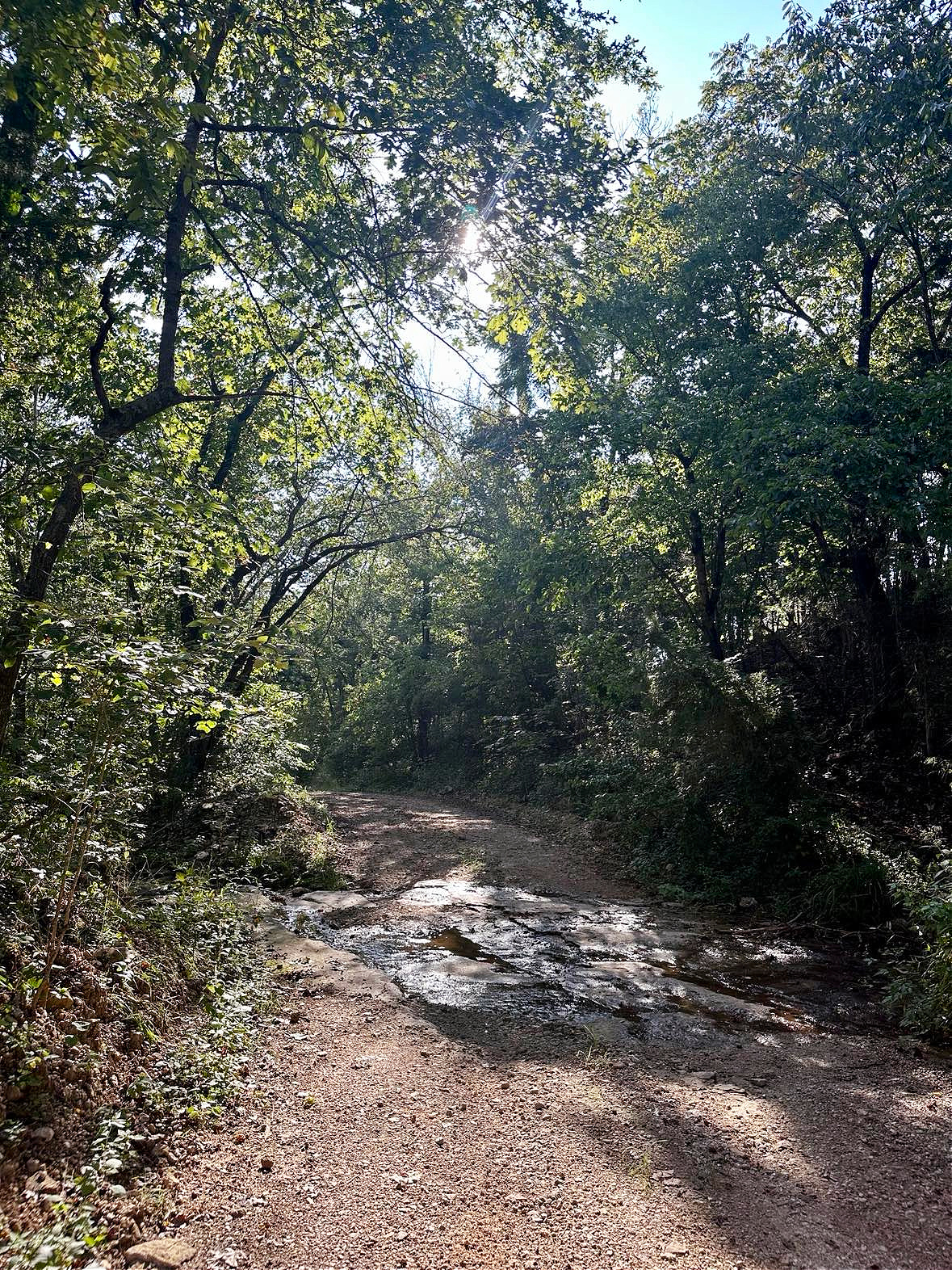
“My dad would be down in the field cutting hay and my grandpa would sit up there on the hill under the big walnut tree, and he’d tell me stories while they were cutting hay,” Sellers says of his grandfather, who then was in his mid-80s. The elder Sellers recounted a number of stories related to the cobbler, but one message was clear: “The very last thing he said was, ‘If you ever see a red light, run.’”
Despite that admonition, Sellers stood transfixed the first time he saw the light while growing up. He and a friend simply stood and looked at the sort of diamond-triangle-shaped glowing object that he recalls reflecting on the nearby surroundings.
“Larry and I stopped, and we just stood there for a long time,” he says. “We could see it moving back and forth, and up and down. We froze. It just scared us big time.
“The hair on the back of my neck just stood up — and still does.”
Bride of the Bridge
While many ghost stories and legends have missing information, one where precious few facts are known ties to a legend known as Bride of the Bridge. At its core, though, it ties to sightings of a ghostly presence near a vintage stone bridge in Springfield’s Phelps Grove Park.
“The story I was always told was this happened right after World War I,” writes Richard Crabtree, a historian and realtor who runs the Springfield, Missouri History, Landmarks & Vintage photography Facebook group. “Since Phelps Grove Park had more or less an oval track to it, it was a hotbed for youngsters with Model Ts to go down there and race.”
It was that reality, Crabtree says, that led the story of a tragic accident for a young couple the same day as their marriage.
“It supposedly was on her wedding day and they hit the bridge and he stayed in the car,” he says of the bride and groom. “She was thrown from the car and smashed into the bridge and that’s where she died, so that is the story. They see a lady in a wedding gown.
“Of course in the 1910s going into the ‘20s, it (her dress) could’ve been traditionally long, could be short. Nobody knows, they just see a figure. We don’t know his or her name; we don’t know when it happened.”
This list represents only a very few stories of many — others that include the Landers Theater, the Gillioz Theater, Pythian Castle — in Springfield and the greater Ozarks. What other places have you heard of being haunted?

